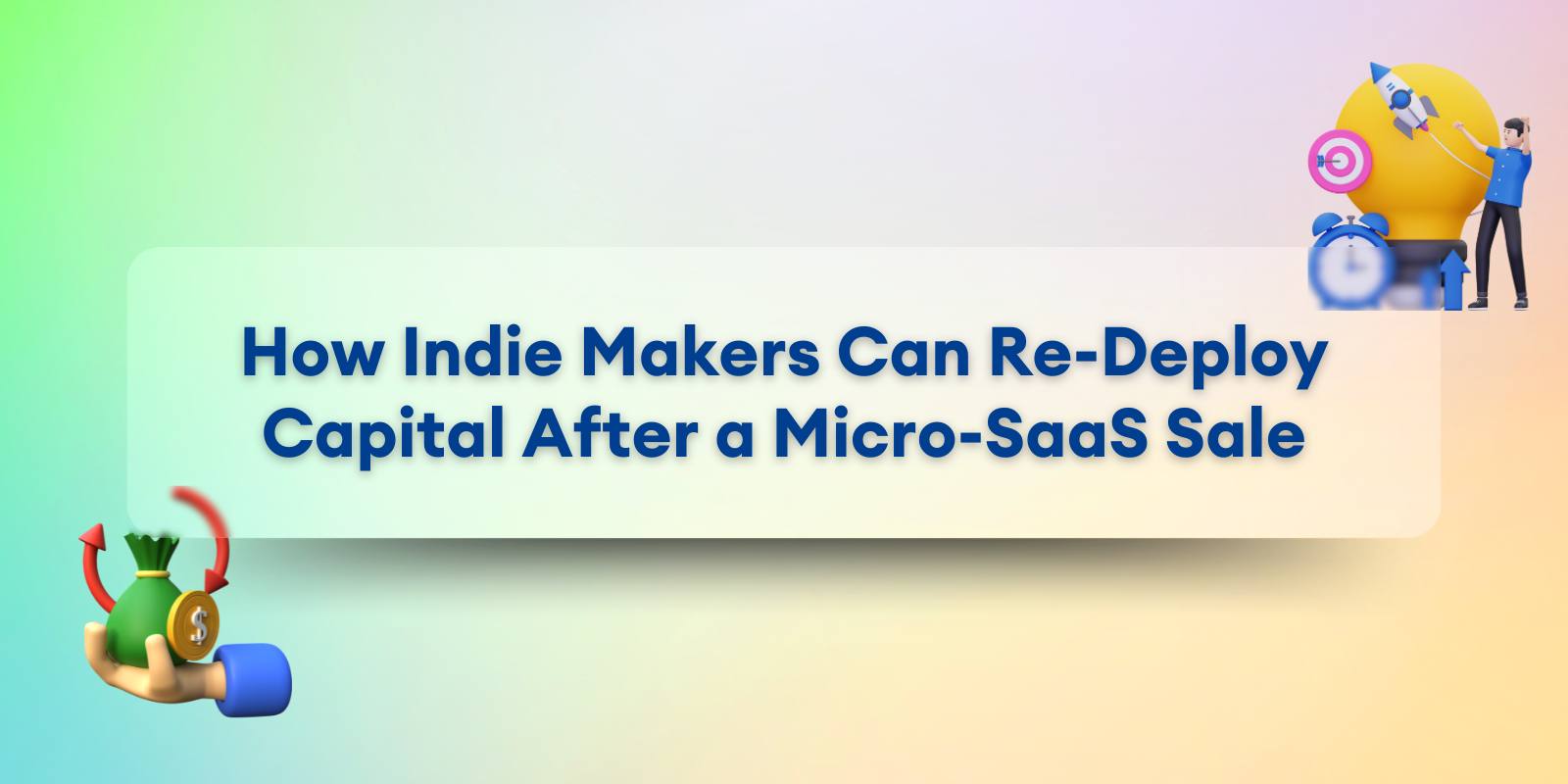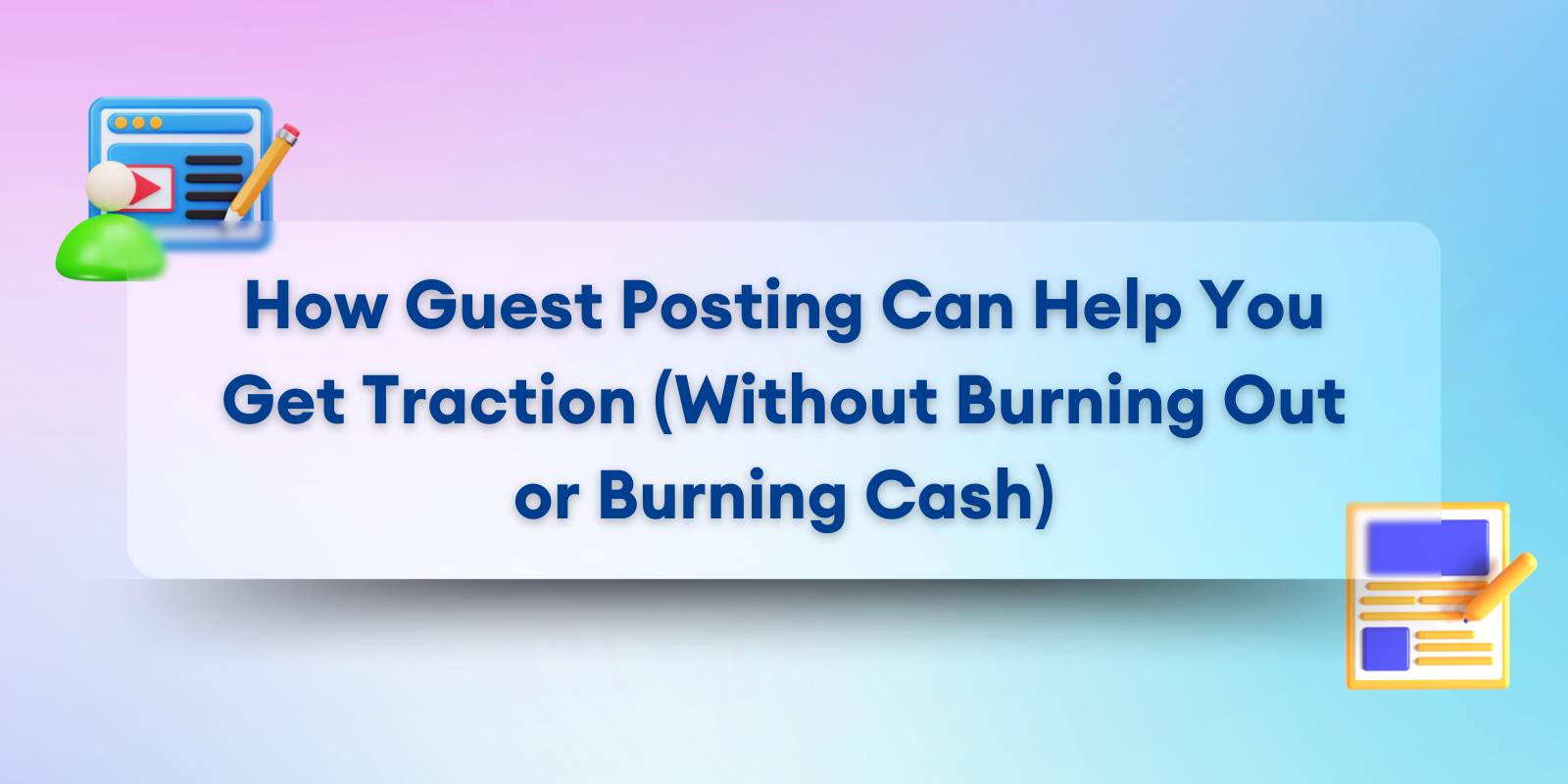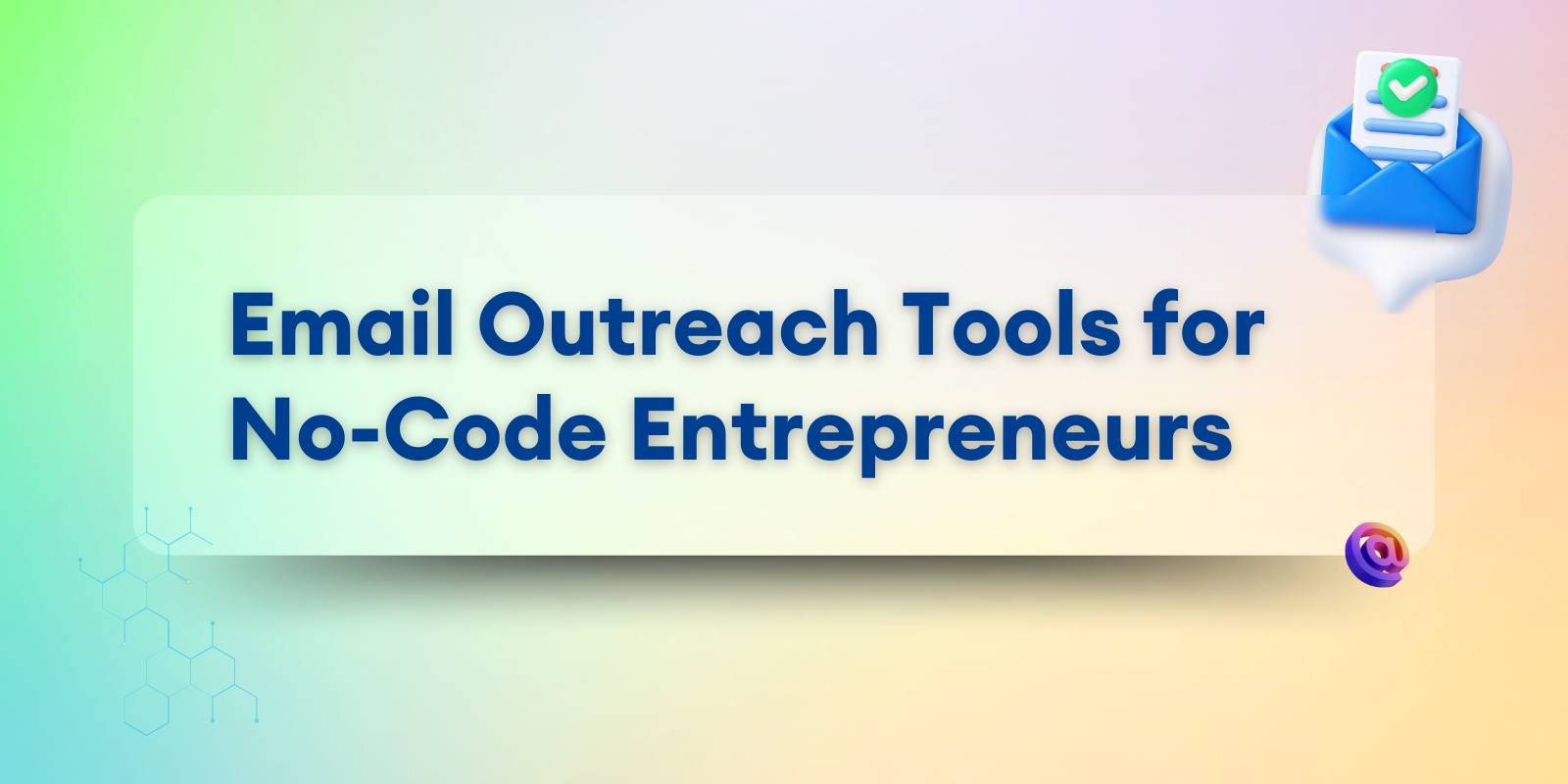
You sold your micro-SaaS.
Stripe hit. Inbox flooded with “congrats.” You even took a real weekend off.
Now what?
You’ve got low six (maybe mid-six) figures in the bank. And a choice:
- Spend it all.
- Sit on it forever.
- Or deploy it like a founder who knows how to build and bet.
This guide is for indie makers and solopreneurs who pulled off the thing most people never do, an exit.
But exits aren’t finish lines. They’re launchpads.
We’ll walk through a smart, low-stress way to reallocate your capital across safe plays, self-investment, and a few asymmetric bets.
Let’s build your post-exit playbook, one allocation at a time.
Why Most Indie Founders Are Clueless Post-Exit (and That’s Okay)
The Grind → Gap Shift: Mental Whiplash After Selling
You’ve been in builder mode for months, maybe years. Shipping, fixing, launching, re-launching.
Then one email lands. You negotiate. Stripe clears. You’re out.
Suddenly, it’s quiet.
No user pings. No bugs to squash. Just a new number in your bank account and way too much time to think.
This mental gap is real. And weird.
You’re proud, but restless.
Relieved, but unsure.
Excited, but… now what?
It’s not just you. Most indie founders hit this post-sale freeze. It’s the first time you’re not sprinting toward survival. And nobody teaches what happens next.
That’s what this playbook is for.
Ego Buys, Over-Saving, and the “What Now?” Freeze
One route: buy stuff. Studio upgrade, Bali ticket, fancy mic setup for a podcast you’ll never launch.
The other: do nothing. Let your cash sit in a checking account while you nervously Google “treasury ladders.”
Neither path is wrong. But neither is a strategy.
Post-exit, your brain gets weird. It swings between “I earned this” and “I’ll lose it all.”
You try to be smart. But you’ve never managed a lump sum before, and spreadsheets suddenly feel heavy.
That’s where most indie founders stall out. They wait. Or YOLO.
What you need isn’t a financial advisor. It’s a framework.
Something that’s part logic, part vibe-check.
The next section gives you that, one smart allocation at a time.
No fluff. No hype. No suits. Just a way to make your win last longer than the Twitter thread announcing it.
A Simple, Real-World Framework for Re-Deploying Capital
Your exit doesn’t need to turn into a full-time investing side quest.
You don’t need a CFA. You don’t need to time the market.
You just need to split your capital into buckets that make sense, based on where you are, what you value, and what gives you leverage.
Here’s a five-part breakdown that works for most indie founders post-sale.
Adapt as needed, but use this as your default setting.
Pay Yourself First: The Sanity Allocation (10-20%)
You earned the exit. So take some.
Set aside 10-20% of the total and pay yourself, clean.
Not to re-invest. Not to save. Not to explain.
This is a lifestyle buffer. A margin of joy.
Upgrade your setup. Take your partner somewhere nice. Pay off something annoying.
This is your brain’s permission slip to stop operating from scarcity.
You’ll think clearer when you're not white-knuckling every spending decision.
And no, this isn’t indulgent. It’s smart. You’re making space to not panic-ship your next idea just to feel productive.
Protect the Core: Yield-Focused Safety (30–50%)
Next, set up your “never lose sleep” bucket.
Think 30-50% in safe, yield-generating vehicles:
- High-yield savings
- T-bills via platforms like Public or TreasuryDirect
- Money market funds
- Even short-term corporate bond ETFs
This isn’t where you get rich. This is where you buy stability.
It’s what keeps the lights on if the next project takes longer than expected.
It gives you a year (or more) of living expenses at low risk and modest return.
Set it, forget it, sleep better.
Reinvest in Yourself: Tools, People, Time (20-40%)
This is where you buy leverage.
20-40% goes into assets that level you up without burning you out.
That might look like:
- Hiring a fractional ops person
- Paying for mastermind groups or expert coaching
- Buying tools you’d normally cheap out on
- Taking a course that builds new skill leverage
- Delegating life admin so you can think again
Your next business will move faster if you are sharper.
This isn’t just personal development. This is compounding capacity.
You’re not just funding future ideas, you’re funding future you.
Explore Smart Risk: Asymmetric Upside (5-10%)
This is your “moonshot” bucket. Small allocation. Big potential upside.
5-10%, max.
You’re not gambling here. You’re placing strategic bets where the return could far outweigh the risk.
Some ideas in this lane:
- Seed angel rounds (only if you know the space or the founder)
- Select crypto plays with real fundamentals
- Pre IPO investing through vetted deal-flow platforms
These bets should come from curated sources, not random Reddit threads.
Look for transparency, access to secondary markets, and investor protections.
Used well, this small slice can open up long-term upside without risking your base.
Liquid Opportunity Fund: Keep Some Powder Dry (5-10%)
Keep 5-10% unassigned.
Not in the market. Not in use. Just sitting.
This is your consulting runway. Your “buy this niche domain” fund.
Your “I want in on this cohort” flex.
Having cash when others scramble? That’s edge.
You don’t need to invest it. You just need it ready.
How to Approach Risk Without Gambling
The second you have extra capital, you’ll get advice from everywhere.
Twitter threads. Angel groups. DMs from “deal curators.”
Some will sound smart. Some will sound hype-y.
Most will blur the line between calculated risk and complete guesswork.
Here’s how to tell the difference.
The Difference Between Risk and Dumb Risk
Smart risk looks like this:
- You know what the money is for
- You know what you’re willing to lose
- You understand the upside and the timeline
- You’re not dependent on it working out
Dumb risk? That’s when you:
- Toss cash into a black box with a glossy landing page
- Hope someone else did the due diligence
- Forget you even made the bet
The real test: if this bet zeroes out, are you still chill?
If the answer is no, it wasn’t a smart risk. It was desperation wearing optimism as a mask.
Smart founders play the long game, even when chasing upside.
What to Look for in Early-Stage & Alt Investments
If you’re putting part of your “Smart Risk” bucket into alt plays like startups or secondary markets, here’s your checklist:
- Clear ownership structure: Do you own equity or just access?
- Real company, real traction: Not hype. Not vibes. Actual numbers.
- Platform transparency: How does the platform make money? Who curates deals?
- Liquidity windows or lockup terms: Can you exit? When?
This is exactly where options like pre IPO investing stand out.
You get access to late-stage companies, often with strong fundamentals and a planned exit path, without needing VC credentials.
Platforms like HudsonPoint offer pre IPO opportunities that sit in a sweet spot:
Higher upside than public markets.
Lower chaos than random early-stage bets.
Vet everything. Then trust your judgment.
The goal isn’t to become a full-time investor. It’s to make a few smart moves that could shift your trajectory over time.
Don’t Jump Into Building Again (Yet)
The cash is in. Your brain’s buzzing. Your fingers are twitching.
And suddenly, you’re back on Namecheap buying five domains you’ll never use.
Sound familiar?
Let’s talk about why most founders jump too soon, and what happens when they don’t.
Why Most Founders Build Too Soon
The silence after an exit can feel… unnatural.
You’ve been sprinting for so long that rest feels like failure.
So you rush.
New idea. New landing page. New MVP.
Except this time, you’re not building from hunger. You’re building from boredom. Or fear.
That energy shows.
You cut corners. You lose focus. You chase trends instead of problems.
Most second attempts that flop?
They weren’t bad ideas. They were built too soon.
You don’t need to ship just to stay sharp.
You need clarity. You need space.
That’s what your post-exit capital bought you, don’t burn it trying to “feel productive.”
Wrapping Up
You don’t need a financial advisor.
You need a plan.
Your exit was the reward for being a disciplined builder.
Now it’s your chance to be a disciplined allocator.
Don’t blow the win.
Don’t freeze, either.
Split your capital.
Pay yourself first.
Protect your base.
Buy back time.
Make a couple smart bets.
Keep some cash ready for the next “hell yes” opportunity.
That’s it.
Your next chapter doesn’t start with a big idea.
It starts with a few smart moves that keep you in the game, sharp, and ready.
Take a breath.
Open your dashboard.
And make this chapter just as intentional as the last one.
Want ideas for what to build next, when you’re ready? Check out: Micro SaaS Ideas You Can Build Fast, Launch Lean & Grow Profitably




